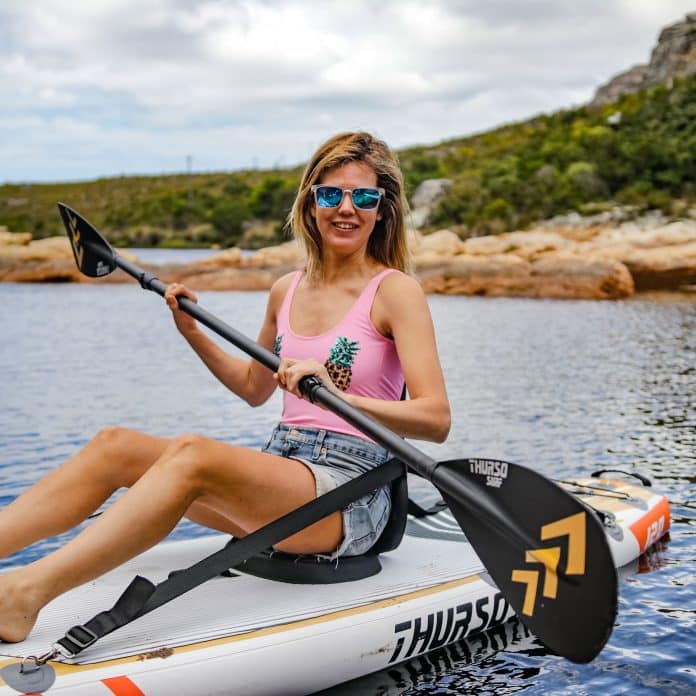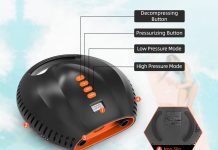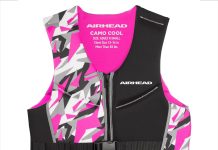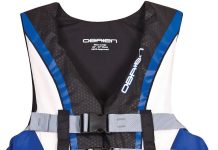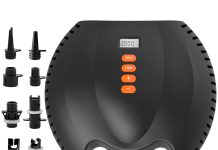Stand-up paddleboarding has gained immense popularity recently as a fun and versatile water activity. As avid paddleboarders, we understand the curiosity that arises when contemplating the equipment needed for this exciting sport.
One common question is whether a kayak paddle can be used for stand-up paddleboarding. In this article, we aim to shed light on this query, providing valuable insights and guidance to ensure a smooth and enjoyable experience on the water.
Can I Use A Kayak Paddle for Stand Up Paddleboarding?
Introduction
Stand-up paddleboarding (SUP) has gained immense popularity over the years as a fun and versatile water activity. Whether you’re gliding across calm lakes, riding waves in the ocean, or exploring winding rivers, SUP offers a fantastic way to enjoy the water while benefiting from a full-body workout.
If you’re new to SUP or want to try it out without investing in specialized equipment immediately, you might wonder if you can use a kayak paddle for stand-up paddleboarding. In this article, we will explore the pros and cons of using a kayak paddle for SUP and provide helpful tips for making the transition smoother.
Understanding Stand-up Paddleboarding
Before we delve into using a kayak paddle for SUP, let’s briefly review what stand-up paddleboarding entails. SUP involves standing on a large board, similar to a surfboard but more stable, and propelling yourself forward using a paddle. Unlike traditional surfing, where you rely on the waves for momentum, SUP allows you to paddle across calm waters or catch smaller waves, making it accessible to people of all skill levels and ages. It offers a unique vantage point, as you can enjoy the scenery while gliding along the water.
Differentiating Kayak Paddles and SUP Paddles
While both kayak and SUP paddles propel a watercraft, they have distinct differences that are important to consider. The most noticeable difference is the shape and design of the paddle itself. A kayak paddle typically has two blades on either end, connected by a straight shaft.
The blades are symmetrical and are usually slightly spoon-shaped, allowing for efficient and smoother strokes in the water. On the other hand, a SUP paddle features a longer shaft with a single blade at one end and is designed to be used while standing on the board.
Advantages of Using a Kayak Paddle for SUP
Using a kayak paddle for stand-up paddleboarding certainly has advantages, especially for beginners or those who already own a kayak paddle. One of the main advantages is cost-effectiveness. If you already have a kayak paddle, you can save money by using it for SUP instead of purchasing a dedicated SUP paddle.
Additionally, kayak paddles are typically made from sturdy materials like fiberglass or carbon fiber, ensuring durability even in rough conditions. This durability can be beneficial when navigating shallow waters or encountering rocks or other obstacles. Moreover, the symmetrical design of kayak paddles allows for efficient paddling and can provide a smoother glide through the water.
Disadvantages of Using a Kayak Paddle for SUP
While using a kayak paddle for stand-up paddleboarding has advantages, it is essential to consider the potential drawbacks. One significant disadvantage is the length of the paddle. Kayak paddles are generally shorter than SUP paddles and are designed to be used while seated in a kayak. The shorter length can lead to inefficient paddling, as you’ll need to bend forward more to reach the water, potentially causing strain on the back and shoulders. Additionally, the single-blade design of a SUP paddle allows for better control and maneuverability in the water. With their two blades, Kayak paddles can often result in less precise and less effective strokes, affecting your overall performance and enjoyment.
Techniques for Using a Kayak Paddle for SUP
If you decide to use a kayak paddle for stand-up paddleboarding, practicing proper techniques to maximize efficiency and minimize strain on your body is essential. One technique is to hold the paddle with one hand on the shaft and the other on the blade. Doing so can achieve a more extended reach and better control while paddling. Another technique is to adjust your stance by widening your feet slightly for better stability. Remember that using a kayak paddle may require more effort and adjustment initially, so take some time to practice and find what works best for you.
Safety Considerations
When using a kayak paddle for SUP, it’s crucial to prioritize safety. Make sure to wear a personal flotation device (PFD) at all times, as it can potentially save your life in case of an accident or unexpected fall into the water. Additionally, be mindful of your surroundings and the conditions of the water. Solid currents or choppy waves may require more advanced paddling techniques, and it’s always wise to paddle with a buddy for safety and enjoyment.
Choosing the Right Kayak Paddle for SUP
If you’ve decided to try stand-up paddleboarding using a kayak paddle, choosing the right paddle for the task is essential. Aim for a kayak paddle with a longer shaft to compensate for the height difference while standing on the paddleboard. Additionally, consider the blade design and materials. Opt for a kayak paddle with lightweight and durable materials like fiberglass or carbon fiber. These materials ensure better performance and durability, allowing you to enjoy SUP adventures while using a kayak paddle to its fullest potential.
Tips for Transitioning from Kayak Paddle to SUP Paddle
While using a kayak paddle for SUP can be enjoyable and cost-effective, transitioning to a dedicated SUP paddle can significantly enhance your experience on the water. When you’re ready to make the switch, remember the following tips. Firstly, choose a SUP paddle with an adjustable length to accommodate your height and paddling style. This adjustment will ensure proper technique and reduce strain on your body. Secondly, practice paddling with the SUP paddle in calm waters before venturing into more challenging conditions. This way, you’ll familiarize yourself with the differences and make the transition smoother.
Conclusion
In conclusion, while using a kayak paddle for stand-up paddleboarding is possible, it is not the most optimal choice. Using a kayak paddle for SUP can have advantages and disadvantages, including cost-effectiveness and durability, potential strain, and less efficient strokes.
However, with the proper techniques, safety considerations, and paddle choice, you can still enjoy the experience while using a kayak paddle. Nevertheless, transitioning to a dedicated SUP paddle will undoubtedly enhance your performance and overall enjoyment if you discover a passion for stand-up paddleboarding. So grab a paddle, hit the water, and have a fantastic time exploring the world of stand-up paddleboarding!

